|
If you're familiar with the idiom "look before you leap," then you're in the right territory for my take on it: "research before you act." Fore example, I won't purchase anything new online without doing at least an hour of research on the product, cross referencing reviews and technical aspects. So when it came to opening an Etsy shop, I poured myself into research to try and have everything set up according to advice, rather than having to go back later and seek out advice if my handmade products weren't selling. Here are the best bits I've learned from those videos and from my own experience.
Those were my top three takeaways for deciding whether or not to start, and then how to start. Please be in touch with your own tips or questions. I'm sure I'll be writing in a few months to update on how it's going. Cheers!
0 Comments
Shall I list the ways - that I keep my presence active online? Honestly, it feels like it'd be simpler to tell you what I don't do. But for clarity's sake, I'd like to go into more detail. For the last few years, it's gone as follows:
In the last few months I have added:
The purposes for being on all of these platforms is for the furthering of my teaching career and, now, for side gigs. As an international school teacher, I find obtaining the next high-quality post to be an extremely competitive situation. Running a website and teacher twitter account seem to be the new "having a masters degree," as in something that used to be considered extra and now feels expected. Fortunately, I find keeping a portfolio and teaching account very rewarding and am grateful for the documentation of the projects I've completed over the years. As for some of these other platforms, they're either experiments or necessary means to ends. But more on that in future blog posts... Please let me know if you have questions about getting started on any of these platforms. Cheers! Maybe you've just signed up for MidJourney and are struggling to generate your images or perhaps you're just wondering what MidJourney might be like. Here's my take on prompts specifically for coloring books.
I've been primarily using MidJourney to create coloring books. I have had lots of ideas, but have been limited by what MidJourney can currently do. To illustrate the point, I tried eight slightly different prompts in my quest to generate a simple black and white image of an ape. All images above in the photo gallery with descriptions below. Prompt #1) "coloring page for young children, thick bold lines, no color, no shading, no background, simple, a basic realistic happy Ape, cartoon style -- quality 0.25" Notes here: "no shading" doesn't tend to work. I've had this confirmed by other users too. Also, you can play around with the quality of the MidJourney output and only go to full quality once you've upscaled an image. However, I found that going any lower than 0.75 really affects what it can generate. Prompt #2) "cartoon of a friendly ape, thick bold simple lines, white background, children's coloring page style -- quality 0.25 Notes here: note how much quality at 0.25 affects the generations. Also, leaving out "realistic" and focusing on friendly and cartoon drastically change the images. Prompt #3) "cartoon of an ape, thick bold simple lines, white background, children's coloring page style" Notes here: Images 2 and 4 had some potential, but the hands/feet were off and it wasn't quite the image I was after. If I liked everything except the hands/feet I would've carried on with regional editing. Prompt #4) "cartoon of an ape, children coloring book page, white background" Notes here: notice how coloring book page turned into actual coloring materials. Oh Midjourney! I think this happened because of how little information I included in the prompt otherwise. Prompt #5) "coloring page for young children, no color, no shading, no background, simple image, thick bold lines, a basic realistic happy Ape, cartoon style -- quality 0.25" Notes here: I was playing around with Prompt #1 but changing the order of some of the prompts as Midjourney does put most importance on the beginning words. Also, you can see the 0.25 at play here again. And you can see that the "happy" and "cartoon" overweighed the "realistic." I find that happens quite often. Prompt #6) "coloring page for young children, thick bold lines, no color, no shading, no background, simple outline and shapes, a basic realistic happy Ape, vector style." Notes here: not much difference between 5 and 6. Maybe "vector image" was helpful in my attempts for a simple but bold image? Prompt #7 "an ape for a coloring page for kids, no color, vector cartoon style --quality 0.25" Notes here: Hopefully MidJourney will learn all things hands, feet, fingers, toes, paws, etc soon. But for now, be prepared to have to regionally edit those. Prompt #8 "style of coloring book, vector lines, thick bold outline, simple basic image, black and white, ape --quality 0.25 Notes here: I would argue that none of these are simple basic images. This is where I stopped attempting this specific line of images. I have found that MidJourney struggles to make simple images and prefers to cook up intricate, detailed images instead. I hope that helps! I'm currently taking a hiatus from Midjourney until I've built up multiple ideas so that I can get my money's worth out of the month's membership. Cheers, Jess Last year I read 72 books. This year I had a baby and didn't quite hit 20. That's life for you! A good portion of my books this year were read in hopes of feeling prepared for labor and motherhood. I consumed far more non-fiction than in past years and think I will continue that trend in 2024. As always, let me know if you want to chat about any of these reads as some of them would make fantastic conversation starters.
1. How High We Go in the Dark by Sequoia Nagamatsu - heavy, poignant, Cloud Atlas meets Cloud Cuckoo Land 2. The Marriage Portrait by Maggie O’Farrell -detailed, intimate, slowly and subtly suspenseful 3. Ina May’s Guide to Childbirth by Ina May Gaskin -informative, helpful, full recommendation to all pregnant people! 4. Red Seas Under Red Skies and Republic of Thieves by Scott Lynch -started this trilogy in 2022, 2nd book was a layered pirate heist, 3rd was "eh", honestly has put me in the mood for more NF reading 6. Mind Over Labor by Carl Jones -interesting, a little woowoo 7. Pleasure Activism by adrienne maree brown -very much outside of my comfort zone, interesting, broadening 8. Mutant Message Down Under by Marlo Morgan -love this short adventure so much I re-read it, mind-bending, expanding 9. Baby Catcher by Peggy Vincent -informative, helpful, and also gets my recommendation for preggos :) 10. How to Change Your Mind by Michael Pollan -listened to this one and it took. me. forever. really interesting content though! 11. How Far the Light Reaches by Sabrina Imbler -yummy yummy ocean creatures 12. Hunt, Gather, Parent -highly recommend for parents of kids older than 2 (will be rereading later) 13. Cribsheets by Emily Oster -***my number 1 recommendation to expecting parents, super informative 14-16. Beartown Trilogy by Fredrik Backman -Backman can be so very dark and so very heavy even with his reflections and lighter elements. This series felt like a burden on my heart, though it was beautifully written and immersive with the characters and towns. 17-19. Golden Compass Trilogy by Philip Pullman -John and my nightly read-alouds for most of the year In September, I was curious about AI and jumped onto Youtube to see which platform was recommended for visual artists. I then stumbled across a Paul Marles video showing viewers how to use Midjourney and Canva to create coloring books to sell on Kindle Direct Publishing (KDP.) Being quite spontaneous, I jumped right in and starting making coloring books that day. Two months later, I've made 23 coloring books and have them all posted on KDP where they are making a small amount of money most days.
It's been quite the ride so I'd like to share what I've learned in hopes of making your journey on KDP easier. (For those who have been asking, KDP is different than becoming a seller on Amazon and selling products. KDP allows users to create content that Amazon publishes upon an order.) First things first, fair warning that your cut of the royalties is quite small. For my each of my Space Series books, I include 40 images on 8.5 x 8.5 white paper. For these specs, the printing cost is $2.84 a copy. Currently, each book is posted on Amazon for $7.99, and for each sale, I receive only $1.95 as my portion of the profit (25% of the listed price.) Secondly, setting up a base of clients to get ratings, reviews, and a better spot in the listing is tricky. You have to find as much of a niche as you can while making sure there is still a market. And then it seems you have to dabble a bit in advertising. I started by just asking my friends and family to purchase and leave reviews and ratings. While there were many generous purchases made by my caring community, very few left the ratings/reviews that were the vital part. So I tried an Amazon Ad since they offered a $100 promo. It was a bit of headache to actually get the credit applied to my account, but in the end, I spent around $8 of my own money to make around $55 in profits, so that was a helpful exercise. However, despite far more purchases I'm still lacking in reviews and ratings. Thirdly, if you'll be using AI to generate some of your coloring images, it's more difficult than you think. I'll be writing another blog on that soon! My best tips are to find what prompts work for you in as few words as possible so that AI can focus on the unique element of the prompt. For example, writing "no shading" doesn't seem to work yet so you might as well leave that out of the prompt. Toy around with the differences for you with "black and white" vs "no color" vs "vector image" etc. The element that tripped me up was missing "AI Oopsies" and only realizing after I received my own copies of the coloring books that there were horses with 5 legs and dogs with 5 paws or birds with 1 leg. AI is learning and growing and will probably be able to do these things soon enough, but for now you have to be vigilant in your visual checks of the images. And if possible, avoid hands. Dear goodness the hands [rubs forehead stressfully!] So my first three months have been a mixture of experiences, but I would say I'm still keen to keep learning and creating. So far, I've only netted $131 in royalties. Keep in mind that I've spent around $80 for Midjourney and advertising. My hope is that this endeavor is a slow burn as making $50 over 3 months of hard work is obviously not worth the time put in as of yet. So here's to the journey and tinkering with what works! I spent 13 consecutive years of my career as a full time teacher or tutor. Then I had a child, and now my career isn't the focus in this season of life. Yet, I still am keen for ways to stay creative and active. I still crave intellectual stimulation. And I still want to be a financial contributor in my household. But how to do that in a world where childcare rates seem absurdly high and part-time job rates seem confusingly low?
Quality remote jobs have thousands of applicants. Tutoring online does not bring in enough money (through all of the companies I've interviewed with/researched.) The internet is full of videos about ways to create passive income for yourself that promise figures that are, frankly, unrealistic. As a stay-at-home parent, I'm currently making small but consistent amounts of money through the following outlets:
One difficulty is in building up my base in all of these endeavors. For the kitchen gig, it hasn't brought any further opportunities around town. For the YMCA, it takes a while to build up a class following which would allow me to teach more classes. For tutoring, I'd love to build up my tutoring clientele, but am currently struggling to do so. I've put up flyers on all the local community boards, ran an ad in the newspaper, and put my. name on a list of tutors at the local school. And I have one student. And I was a teacher here last year! And finally, for online books and art lessons, there's just a lot of competition! Even trying to find niches, use the right keywords/SEO, and experimenting with paid advertising hasn't gotten me too far yet. Hopefully this last endeavor is a slow burn. While this blog post isn't especially helpful or clever, I post it to share the realities of what finding side gigs is like in the US in 2023. I will keep you all updated should I find increased success and can share the love. My reading selection this last year is quite varied! It's an interesting practice to look back over a year's reading selection and look for the patterns that formed consciously or unconsciously. I did intentionally reach for women writers and writers from diverse backgrounds. I toyed around with writing a novel this year, so I read mostly fiction, specifically dystopian series, as a study of sorts. I started 2022 as a part-time tutor, living in the Caribbean with lots of gym/beach time for reading so I made a goal of reading 52 books this year and overshot by about 20 books! I probably won't read this many books in a single year again until retirement. As always, let me know if you want to chat about any of these reads as some of them really left a mark and I would love to discuss your experience of the text!
1. The Glass Face by Frances Hardinge -Blessings on the curiosity of more imaginative people than I! The use of Faces to remark upon society in the middle of a tunnely new world. So fun. 2. The Lie Tree by Frances Hardinge -As always after these period pieces, so glad to not be in petticoats, not have to be separated out as the gentler sex, not be dismissed in matters of intelligence. Of course, there are still elements of this, but I would much rather be a woman today than one a few hundred years ago (or even 100 years ago.) 3. The Night Circus by Erin Morgenstern -Such delicious imagination for visuals. Plot and imagination were just fine, but it was the visuals that caught me for this one. 4. Love Poems from God: Twelve Sacred Voices from the East and the West -Completely new images, names, and ideas for God. Almost felt heretical in its novelty and freedom. 5. Lamb by Christopher Moore -so perfectly satirical that it actually delivered some deeper reflections on my traditional understanding of the Christian religion 6. Winter Garden by Kristin Hannah -Kristin Hannah writes wounded women well. Dear Lord, the suffering. Takeaway, as often, is the power of story. 7. Evolve Your Brain by Joe Dispenza -Repetitive, but the last 200 pages are fascinating 8. Raybearer and Redemptor by Jordan Ifueko -Wakanda meets Harry Potter, yes please! You gotta love to see a brown girl as a well-written protagonist making amazing, revolutionary moves. 9. The House in the Cerulean Sea by TJ Kline -Very cute, Frederik Backman-vibes. 10. Send For Me by Lauren Fox -lovely writing style, interesting to see the effects of WWII from a distance of time and space 11. A Room Called Earth by Madeleine Ryan -so very interesting! Neurodiverse writer...the perspective and shared thoughts are fascinating and lovely. There is some cursing and sex for those of you who avoid that, but if you don't - I highly suggest for a wonderful trip into someone else's brain 12. Neverwhere by Neil Gaiman -I seem to like epics where the protagonist has to both question their sanity and also leave an old way of living behind. Excited to read that Mr. Gaiman plans to write another novel in this same setting, as the complexities of the world he created would be lovely to hear more about and return to at some point in the future 13. Olive Kitteridge by Elizabeth Strout -I found this so heavy and so sad. That being said, a few sentences and a few images have stuck with me since the weeks reading it. It is sometimes helpful to see fictional sorrow. 14. The Starless Sea by Erin Morgenstern -Layers upon layers upon layers. You certainly have to suspend your disbelief with this one. But I like the imagery, symbolism, and secret society aspects. 15. The Invisible Life of Addie LaRue -I seem to like stories that flip a normal set of values upside down. What do you value most when you've been granted a form of immortality? And how do you outsmart a greater force than yourself while staying within your values? 16. Piranesi -I found this to be as gloomy as the scenery you stay in for most of the short read. The bit of mystery being unravelled was interesting enough that I kept at it. Not sure if I would recommend it. Though it is unique and well-written, it just made me feel very heavy. 17. The Bear and the Nightingale by Katherine Arden -I've not read many Russian folk tales, so it was interesting to learn of some of the myths. As often in these books I've been choosing, I'm left with the question of how to get beyond fear? So many of these characters aren't afraid where/when/how others are. 18. Like a Mother by Angela Garbs -Quick little thing with lots of eye-opening facts. (Louis XIV, what?!) 19. How to Be You by Jeffrey Marsh -Quick, positive, interesting take on some psych ideas I've become very familiar with. I specifically wanted to read a transgender author and learn more, but this is less of a memoir and more of a self help selection. 20. Hamnet by Maggie O'Farrell -As always, the continuing takeaway is I'm so glad to live in modern times. Also, this was the most specific picture of a mother mourning her son that I've ever read. Wept through a few of the beautiful and striking scenes. 21-24. The Ballad of Songbirds and Snakes and The Hunger Games Trilogy by Suzanne Collins - Yum. So fun and sharp for YA! 25. Olive, Again by Elizabeth Strout -I went back for more "fictional sorrow" as I wrote after the first book's reading. And the first review still holds true. You get a bit more idea into how Olive came to be Olive - and more space to see how to approach Olive-like people in reality. 26-27. Flame in the Mist/Smoke in the Sun by Renée Ahdieh -Little bits of Japanese culture all through here mixed in with the mystical adventure. It was a fun ride with enough small twists and mysteries that kept me page-turning. Love a strong female protagonist. 28-29. The Wrath and the Dawn/The Rose and the Dagger by Renée Ahdieh -Little bits of Arabic culture, but otherwise, same review as previous series! Fun, light read. 30-32. Mistborn Trilogy by Brandon Sanderson -The perfect series to read while (still) waiting for the 3rd Kingkiller Chronicles book to come out 33. The Midnight Library by Brian Haig -Interesting. Not mind-blowing, but quirkily and lightly interesting. Little mind nuggets now a-stewing. Recommend for anyone in a rough season or at a fork in the road. 34. The Humans by Brian Haig -This has made me chuckle aloud quite a few times - was not expecting that! Alien narrator perspective is where it's at. 35. The Buried Giant by Kazuo -Not for me, personally. I found this piece to be plodding, heavy, slow, and burdened. I kept waiting for the mist to clear. It left me with a few half-thoughts to mull on, but that's about it. 36. The Anthropocene Reviewed by John Green -Lovely collection! These "reviews" both made me chuckle and made me think hard on some elements of our culture. Glorious quotes, wonderful topics to mull over, fun facts, and an honesty and interconnectedness that ties it all together. 37- 39. The Legend Series by Marie Lu (Legend, Prodigy, Champion) 40-41. Six of Crows and Crooked Kingdom by Leigh Bardugo 42. The Water Dancer by Ta-Nehisi Coates 43. Between Two Kingdoms by Suleika Jaouad 44. (Oops, book #2) Kingdom of Copper by SA Chakraborty 45. What Should Be Wild by Julia Fine 46. Witchmark by C.L. Polk 47. A Girl is a Body of Water by Jennifer Nansubuga Makumbi 48. Migrations by Charlotte McConaghy 49. Expecting Better by Emily Oster 50-56. The Queen's Thief Series (Books 1-6) by Megan Whalen Turner 57. Seven Husbands of Evelyn Hugo by Taylor Jenkins Reid 58. The Happiness Project by Gretchen Rubin 59-60 Children of Blood and Bone & Children of Virtue and Vengeance by Tomi Adeyemi 61. Normal Family by Chrysta Bilton 62. The Feather Thief by Kirk W. Johnson 63. House of Rust by Khadija Abdalla Bajaber 64. The Book Woman of Troublesome Creek by Kim Michele Richardson 65. We Were Liars by E Lockhart 66. The Storied Life of A.J. Fikry by Gabrielle Zevin 67. The Lies of Locke Lamora by Scott Lynch 68-73. Harry Potter Series, Books 1-6 by J.K. Rowling 74. Cloud Cuckoo Land by Anthony Doerr The phrase "scope and sequence" either makes me want to start daydreaming about literally anything else OR makes me super impassioned about creating efficient, research-based, sequential curriculum.
Being an international school teacher, I've both written and taught dozens of curricula at this point. Each time I get to a new school and am handed whatever the last teacher left behind plus the school's general structure/educational philosophy I end up wondering if there isn't a more efficient way? Most of my experience has been that, in general, teachers before me do not leave helpful documents about their lesson and unit plans. Or if they do, there isn't much sense of scope and sequence. Or if there is, there isn't scope and sequence developed for smooth transition with the levels above and below. I think the most efficient system would be to start with the widest most general view to "build the skeleton" and then work in more and more detail, leaving the classroom teacher with autonomy to make choices from within that framework. But this skeleton is sadly lacking at most schools I've worked at. Why is that? It can be as simple as what content needs to be taught in each grade or as complex as what skills/characteristics need to be mastered in each grade. I have a personal teaching objective. It is that students leave my classroom with better critical thinking, divergent thinking, and SEL practices. I also hope that they have become more adept at asking better questions. These aims can be accomplished within any framework, so I easily adapt myself to each school I staff on. And yet, it would be really lovely to be able to apply my objectives within an organized, school-wide scope and sequence! What is your experience with this? Have you ever worked at a school that has been able to ask the big questions of their curriculum and both get it in writing and get it in action? I am well aware that climate change and global warming are mostly caused by much larger institutions than an individual, a household, or even a neighborhood. But I also know that it feels good to make small changes in my daily life and feel more connected to the nature around me by inspecting and changes my manner of consumption. If you're looking to add some small products into your life that have less chemicals and a real sense of grounding, these are some of my personal suggestions.
PRODUCTS TO USE ON THE GO!
PRODUCTS FOR LIFE
WAYS TO DEAL WITH WASTE
WAYS TO CONSERVE/CONSUME RESPONSIBLY
Here are some poems I wrote for the joy of playing with words and the good of growth: - - - - - - - - - - - - - - - - - - - - - - - - - - - - - - - - - - - - - - - - - - A ceiling fan is never enjoyed even with eye contact and happy sighs. Not ever in the same way as after the hours the power was out, the days you didn’t have one at all, and the week it groaned and clicked relentlessly. It’s not as if there is one last joyous moment before the amputation. No, what is needed is gratitude like an oracle, thankfulness with the foresight of the blind, and the imagining of things as they are not, in order to be best well with things as they are. Hold one black paper up to the sky for the smartest rainbows. - - - - - - - - - - - - - - - - - - - - - - - - - - - - - - - - - - - - - - - - - - When Water Does Not Work What to do with the paintbrushes covered in oils? And the accidentally-purchased dry clean clothes? And if the baptism doesn’t take? - - - - - - - - - - - - - - - - - - - - - - - - - - - - - - - - - - - - - - - - - - It is fitting to trace my life as she cradles her beloved’s. It is finishing to cherish my moments with the same persistence of need and fox-tail of longing to, to somehow complete the beauty by looking, caging, sharing, noticing, capturing, pointing. She caught at it. The paths she walked have prints of her heels catching. My paths show smooth steps: the orange dirt bears signs of pacing. Moments are immortalized in gratitude. Life is made full in praise. And the lace of the waves is such that you couldn’t and wouldn’t set needle to it, each swirl of cloud or cream resists record. - - - - - - - - - - - - - - - - - - - - - - - - - - - - - - - - - - - - - - - - - - My most beloved cognitive error: a mouth full of strawberries, life was always sweet. Ecclesiastical knowledge windows upon windows: something to it. Have grace when you turn your back on the breeze to hold hands with the wind. - - - - - - - - - - - - - - - - - - - - - - - - - - - - - - - - - - - - - - - - - - I don’t read much poetry because I don’t understand it. I only write some to try my hand at the Hemmingway truth. - - - - - - - - - - - - - - - - - - - - - - - - - - - - - - - - - - - - - - - - - - If god isn’t real and prayers land on the ceiling (1) If god isn’t real and prayers land on the ceiling, well what can we say is worthwhile and weighty? If pastors are just pasters of posters of propaganda on all those old poles patched with scraps of corners and rusty stapled marks of other flyers, what will stand solid staying top-side-still in the sifter? If god isn’t real and prayers land on the ceiling (2) If god isn’t real and prayers land on the ceiling, my quiet heart yet offers worthy pebbles: stone that does not break and gem that does not ignore. The worn-old quilt of henna hands, blue white beads, and doorway scrolls is soft and keeps life. - - - - - - - - - - - - - - - - - - - - - - - - - - - - - - - - - - - - - - - - - - We climbed the nooked stairs up to the terraced top. There in the corner were two boys with smiles and guitars. Coming out of their chests were long pieces of red yarn. As they played a neighborhood tune, the large party to their left picked up a piece and held it loosely as they sang along for good times. The rest of the strings remained on the floor. I picked one up and plugged it to my heart. Oh the connection was good: tin cans formed and the vibrations began to flow like a looping hand, back and forth. My red strand was a quiet, small, brave thing to do. but what (joy)! Why were the other lines left on the unfeeling ground? I picked up more and fixed them in. The smiles increased, the warmth glowed, the music took off with the night. - - - - - - - - - - - - - - - - - - - - - - - - - - - - - - - - - - - - - - - - - - mothers sigh for sitting on counters and kitchen floors wives, for long drives and the freedom to be careless with their selves and the others sigh for sighs of wanting a body reclaimed they wait to wish for time alone eager for the struggles of a future un-had yet enjoying the always-ripening-and-spoiling avocadoes that sit undisturbed on their cool, clean counters - - - - - - - - - - - - - - - - - - - - - - - - - - - - - - - - - - - - - - - - - - Running, mostly walking in the sudden thick wetness. Swollen hair in tubes, snake tails in mud, fibers expanded, held around the wine bottle that is life and sweat running through and also forming up all sky, all ground, connected in permanent rain structures. The form molded in white plastic and flip-upside-down-able, puddles to clouds: modern columns, mist to surface: lined points to spin around This world sensibly keeps the clouds’ lighting to ease the hollow plastic into Comfort and Depth. But really, it’s a large red rain jacket on warm skin and bare feet slipping by the front door. - - - - - - - - - - - - - - - - - - - - - - - - - - - - - - - - - - - - - - - - - - From where they swim in the depths below to points where wings segment the wind, all these creatures high and low know we each, together, have sinned. Yet let us not forget to tell of trails light and bolstered, even unpinned. And may we remember just as well How goodness can be twinned: Eyes must open to receive sight Touch the earth to know heaven - - - - - - - - - - - - - - - - - - - - - - - - - - - - - - - - - - - - - - - - - - I left home to taste what was good, and to test for good what was home. I changed zipcode and standards, clothing and cultures. I swallowed ice cream for breakfast, forbidden bottles for lunch. Even so – even the distance and difference being full – I hadn’t left. Home is where the mind is; mine still bound by such only ways. Eventually, I suppose I did leave. Because now I know I have no interest in my spot at the lunch table. But what if the odds are bizarrely in my favor and home is where the heart actually is? - - - - - - - - - - - - - - - - - - - - - - - - - - - - - - - - - - - - - - - - - - the rubbish parade marches the town every day useless news-crumbles roll down rusted cement alleys empty gray-sand wet-spotted streets the rubbish parade is all flash and bright uniforms: great glowingly eggy sunset-cream with blood stripes boots: all crisp, deep knockware (as if that were necessary) the rubbish parade marches right, and right, and right, and right a caravan of gleaming trash in wagons, saturated recycles on trays the alone-one audience of a girl doesn’t even like them she says she doesn’t care to watch as her cheers bounce askew off the tinways there she is see her as they pass by? there she is. every time. well, most times one time she was muted by glory-brightness on a different street, of course she has seen other streets you know better streets streets with pink slender ones filing by and others with wide-eyed brown boys dancing through but there she is, right there, do you see her? she’s there and they’re there the rubbish parade dins on and her wooing is the flat eye-shine; the reflected stale march - - - - - - - - - - - - - - - - - - - - - - - - - - - - - - - - - - - - - - - - - - The meals she liked best had to be forced, though the poison was gulped in seconds (and thirds.) One portion of posture practice with mind-numbing nothingness, but that Blessed Woman ate no food when the mouse was around! What a waste of non-empty that would be. She sharpened herself by measuring back to back with the giant. It’s not all rot and spoil. God help the pleasure-seeking vortex of a girl. - - - - - - - - - - - - - - - - - - - - - - - - - - - - - - - - - - - - - - - - - - |
Jessica LaneBeing a lifelong learner means intentionally seeking out experiences that enforce growth and personal development. Archives
February 2024
Categories
|
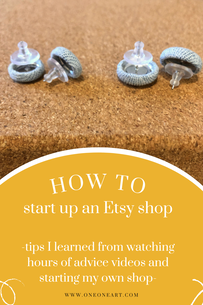
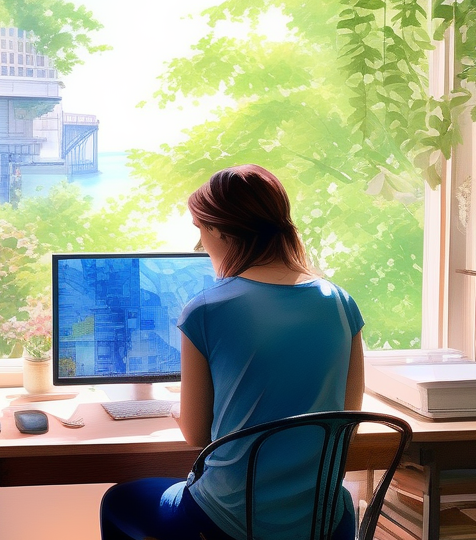
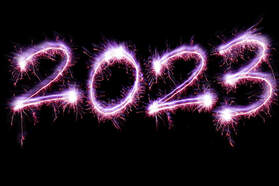
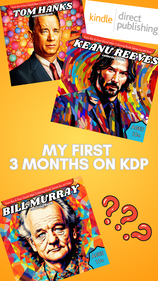
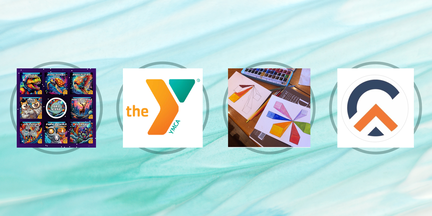


 RSS Feed
RSS Feed